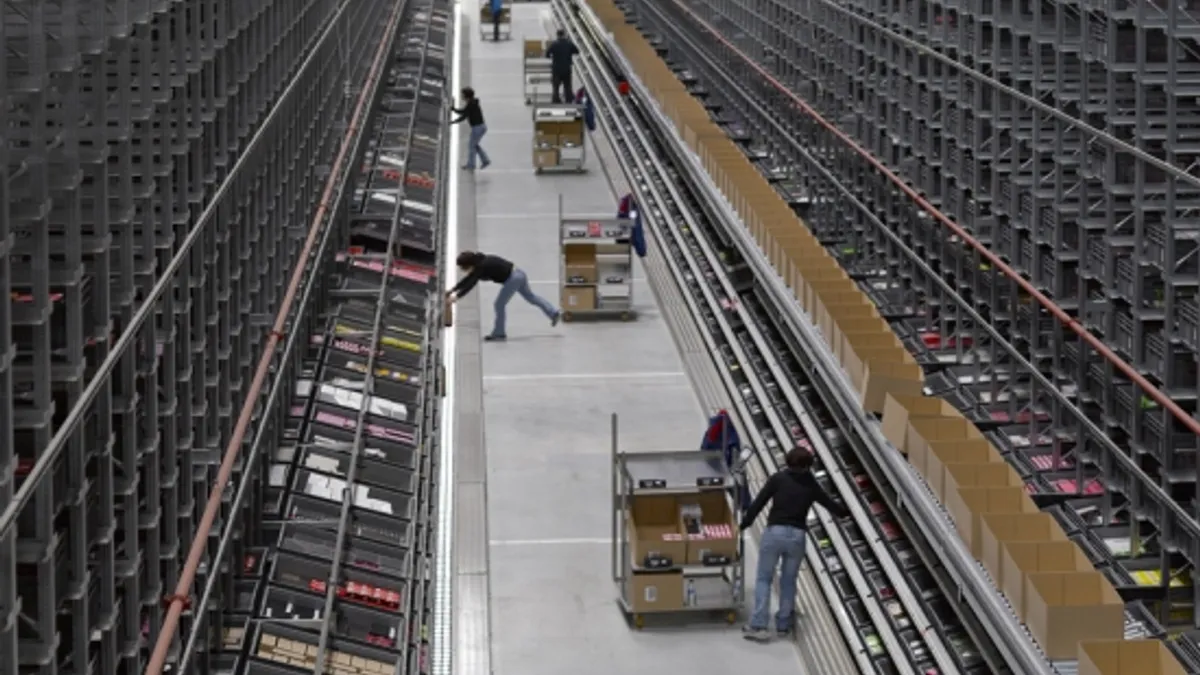Some types of construction projects historically have been prone to delays, and thanks to the COVID-19 pandemic, those delays are about to get worse, according to a Moody's Analytics REIS analysis.
In its report, Moody's said that 82% of the multifamily projects that started construction between 2002 and 2019 were completed (secured a certificate of occupancy and started leasing) at least one month behind schedule. During that same period, the average completion date for multifamily developments was a little more than four months late, with only 18% finishing early (15%) or on time (3%).
Other types of projects did a little better from 2002 to 2019. Industrial projects finished an average of almost four months behind schedule, while office projects finished an average of almost three months late and retail project timelines fell almost two months behind. More industrial projects (40%) than any other project type were completed on time, with office (11%) and retail (6%) projects, respectively, a distant third and fourth.
So, why did these projects fall behind? According to the report, there were many factors:
- Weather issues
- Supply chain disruptions
- Strict regulations and building codes
- Inadequate supply of skilled workers
- Disagreements between the project team about design, specifications, materials and costs
- Other causes
The Great Recession, which started in l2007, also played havoc with construction schedules as workers were laid off and banks tighten their lending restrictions.
And then the coronavirus spread
The Moody's analysis says the spread of the coronavirus has dealt the construction industry many blows. First, unlike the kinds of recessions the U.S. has seen before, this economic body slam was caused by mandatory government shutdowns, not by an out-of-control real estate market or another financial implosion.
Next, the coronavirus dealt not only the U.S. economy a huge blow but the world's economy as well, disrupting supply chains and other business processes.
Finally, and perhaps the most impactful, is the fear that there will be a second wave of COVID-19 cases later this year or at the start of 2021. Until a vaccine is rolled out and there are better treatment options for those who are infected by the coronavirus, contractors and other employers must abide by new safety protocols, which could delay projects because of the time it takes to implement them every day and because social distancing will lower capacity and, therefore, productivity in some areas.
The Associated General Contractors of America conducted a survey of its members in early May and found that 67% had at least one project canceled or delayed and that 30% had to halt work because of a government shelter-in-place order.
In general, Moody's had this to say about the most recent delays:
Barring significant supply chain interruptions, those areas of the U.S. that were not subject to stay-at-home orders that halted construction, like in Texas, should have fewer construction delays than those areas experiencing shutdowns.
For those areas, like New York and Detroit, that did experience construction shutdowns, the longer the period of time between stopping and restarting projects, the more likely there will be delays.
If there is a resurgence of COVID-19 cases, the construction industry should prepare for more delays.
Construction sector outlooks
Here's how the coronavirus could impact the four major property types Moody's follows:
Multifamily
Nationwide, Moody's earlier had predicted that the multifamily sector would deliver more than 300,000 units this year, but its latest estimate has that the number at fewer than 246,000 units. If the pre-coronavirus estimate had held, multifamily would have delivered a record amount of new construction this year. Ironically, fewer units delivered in 2020 means that worries about over supply of multifamily units can be set aside for now.
Office
The markets that have been most impacted by delays in office projects are Palm Beach, Florida; Philadelphia; Seattle; New York; and Sacramento, California. But Moody's said that the office sector has not registered many delays, mostly because developers have not flooded the space with product.
Tight lending policies have also removed the threat of over building. Partly due to a surge in pandemic-driven remote working, Moody's expects vacancies to rise approximately three points by 2020, a record high for the sector.
Retail
Already under fire because of the increasing popularity of online shopping, retailers had not brought much in the way of new construction this year, so delays were not significant as they relate to total space. For example, the percentage of decrease in retail projects pre- and post-coronavirus was 15.7%, but that translated to a drop of just a little more than 1 million square feet — 5.44 million square feet from a projected 6.45 million square feet.
The downside, though, is it would take the delay of only a few projects to significantly impact the sector.
Industrial
The uptick in online shopping during the lockdowns has increased the need for warehouse and storage space, so the industrial sector should benefit. However, in the short term, there still could be a pause in construction while developers wait out the peak of the crisis and try to determine exactly what the need for new warehouse space will be once the pandemic dies down.
The sector will not go unscathed, however, as Moody's expects total industrial space delivered in 2020 to be 89.3 million square feet, down from a pre-pandemic predicted figure of 120 million square feet.





















